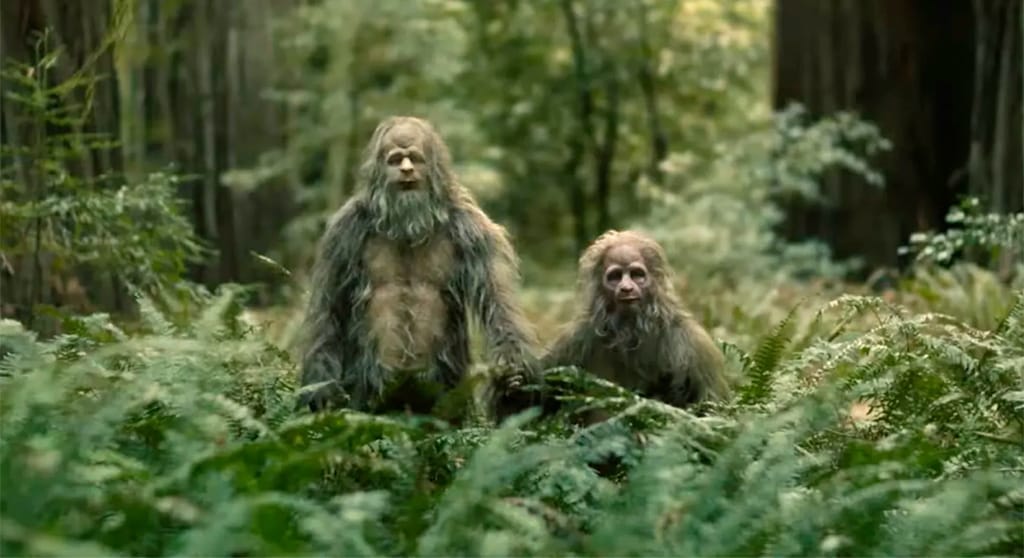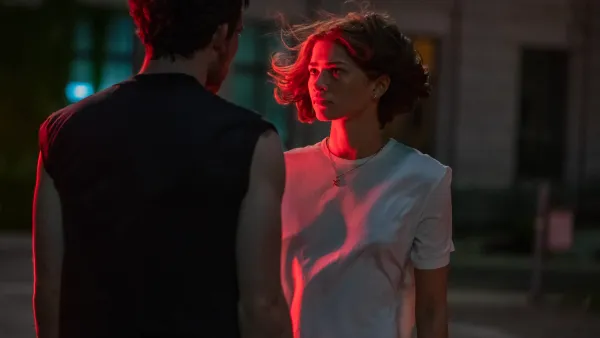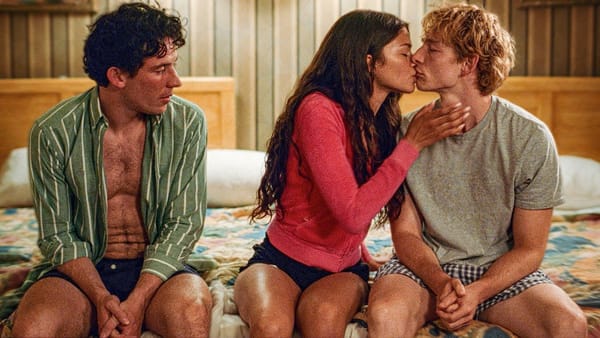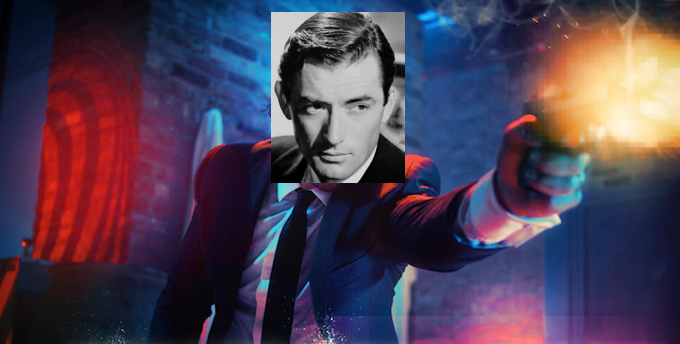What to Watch: Outsider Art Edition
Reviews of "Hundreds of Beavers," "Sasquatch Sunset," Cindy Lee's double album "Diamond Jubilee" and more.
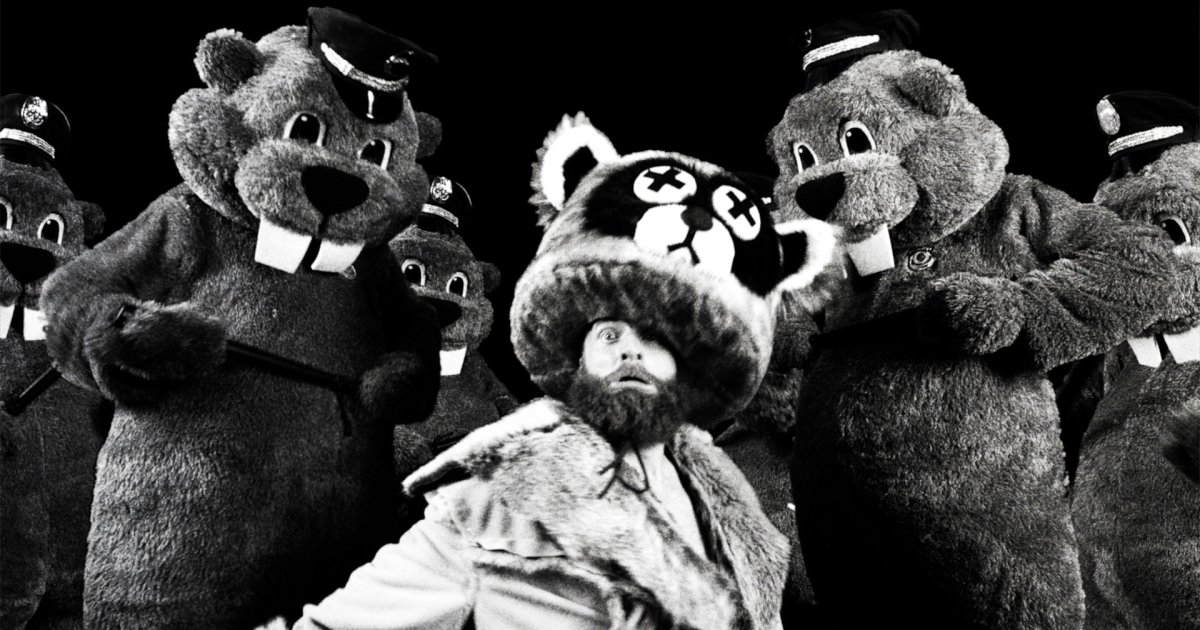
Lots to read this week – sorry, I felt like covering a bunch of different things. It’s an off week for major new film releases, which makes it a perfect one for inspired fringe projects like a demented fur-trapping comedy (see below), a pseudo-nature documentary about the last family of Bigfoots (“Sasquatch Sunset” – my Washington Post review is past the paywall), and a spooky new recording by Cindy Lee, a singer-songwriter who chooses to live and work outside the moat of corporate music distribution. (“Diamond Jubilee” – see review below.) Yes, I know there’s a new Taylor Swift album (or two) out; let me get back to you on that. Maybe. Probably not.
Oh, and I wrote a review of Peter Cowie’s new Ingmar Bergman biography for the Wall Street Journal, which you can find at the WSJ site (subscription only).
But first, some suggested reading. My old EW colleague Mark Harris has an exquisite analysis of the new Netflix “Ripley” up at Vulture that starts with the seemingly shallow question “Is Tom Ripley gay?” and heads off in directions that cast light on all of the filmed versions of “The Talented Mister Ripley” – Harris notes correctly, that the new series drops the “Talented” part from the title – not to mention the dark star that is Highsmith herself. He also has interesting things to say about the casting of two actors who are seemingly too old for their parts:
“As we watch Ripley in New York, dourly plying his miserable, penny-ante con from a tiny, barren shoe-box apartment that barely has room for a bed as wide as a prison cot (this is not a place to which Ripley has ever brought guests), we learn a lot: This Ripley is not a struggler but a loser. He’s been at this a very long time, and this is as far as he’s gotten. … And Dickie, as a golden boy, is pretty tarnished himself — he isn’t a wild young man but an already-past-his-prime disappointment, a dilettante living off of Daddy’s money while dabbling in painting (he’s not good at it) and stringing along a girlfriend who’s stuck on him but probably, in her heart, knows he isn’t likely to amount to much.”
And in the new Harper’s, Daniel Bessner provides one of the best thumbnail histories I’ve yet read of the entertainment industry in the 21st century and why the current business model looks headed for an ignominious extinction:
“The new effective bosses of the industry—colossal conglomerates, asset-management companies, and private-equity firms—[have] not been simply pushing workers too hard and grabbing more than their fair share of the profits. They [have] been stripping value from the production system like copper pipes from a house—threatening the sustainability of the studios themselves. Today’s business side does not have a necessary vested interest in “the business”—in the health of what we think of as Hollywood, a place and system in which creativity is exchanged for capital. The union wins did not begin to address this fundamental problem. Currently, the machine is sputtering, running on fumes.”
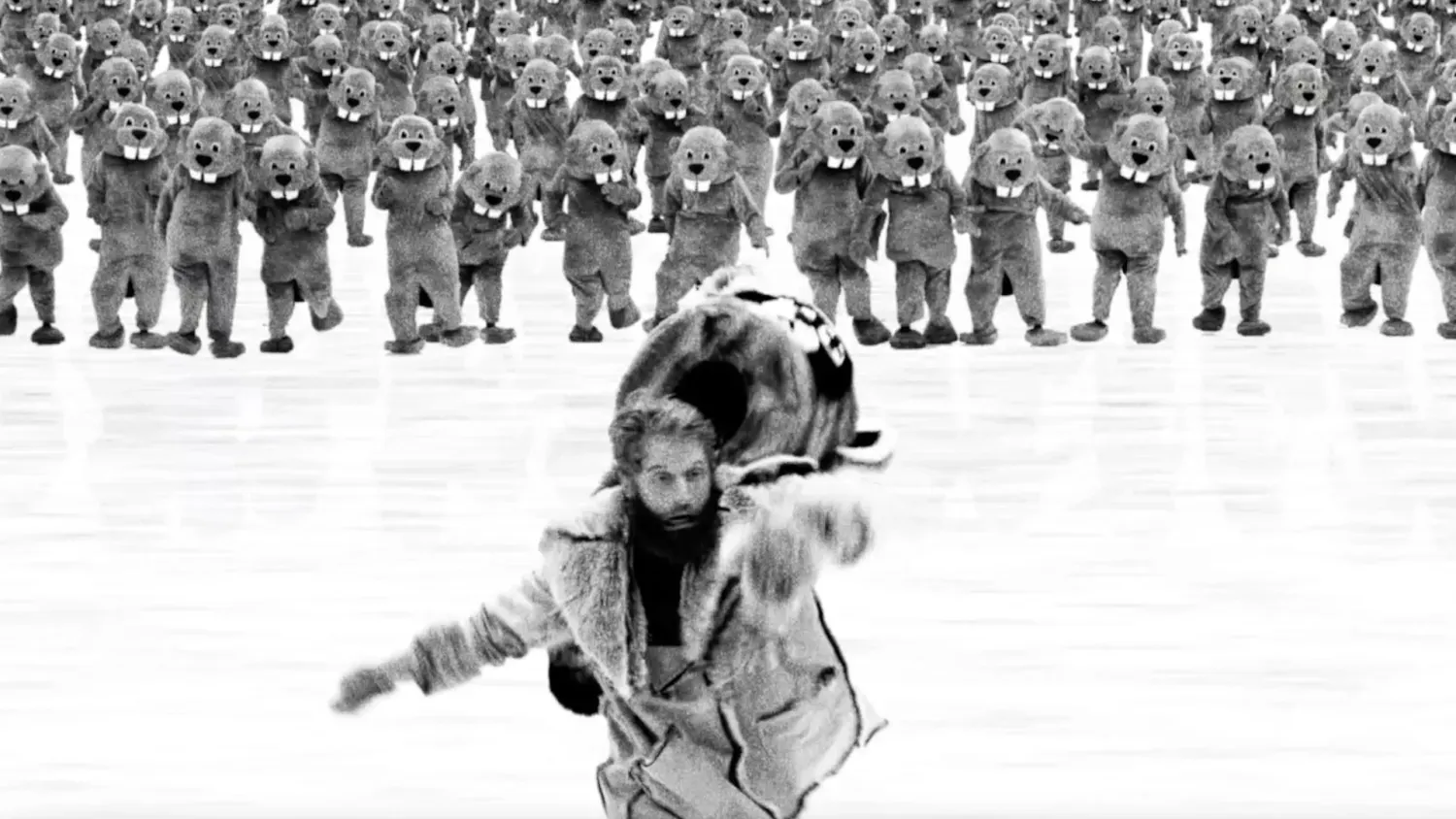
Two hundred years ago, our pioneer forefathers whiled away the long, dark winters by creating homemade folk art and cooking up sagas about folk heroes like Paul Bunyan and Johnny Appleseed. In the 21st century, they just make movies. Coming to you straight outta Wisconsin, “Hundreds of Beavers” (⭐ ⭐ ⭐ 1/2) is home-brewed outsider art, and it is side-splitting. Directed by Milwaukee filmmaker Mike Cheslik and written by him with the movie’s star, the enthusiastically named Ryland Brickson Cole Tews, “Beavers” has been tearing up the flyover-country festival circuit since 2022. It made it into selected commercial theaters in January and is as of this week available for a $5.99 rental on Amazon and Apple TV. If the movie’s playing at a theater near you, I’d advise you go with some friends, or invite the gang over if you’re watching at home – this is a crowd experience if ever there was one.
The best way to describe “Hundreds of Beavers” is [inhale] the unholy love child of silent slapstick two-reelers, “Betty Boop” cartoons, Chaplin’s “The Gold Rush,” a Warner Bros. “Roadrunner” short, “The Perils of Pauline,” an 8-bit videogame from 1983, your weird cousin’s Photoshop memes, a drinking game, “Popeye,” a D.W. Griffith film, and a convention of Major League Baseball mascots. With a little pole-dancing thrown in. Tews plays Jean Kayak, a frontier applejack brewer who’s knocked unconscious by an exploding still and wakes up in a winter disasterland of slippery rabbits, wily raccoons, diligent beavers, and killer icicles. The rabbits, raccoons, and beavers are played by humans in somewhat convincing mascot costumes; we’re also treated to fish made from old socks and a horse that looks like and probably is two guys forced at gunpoint to get under a blanket.
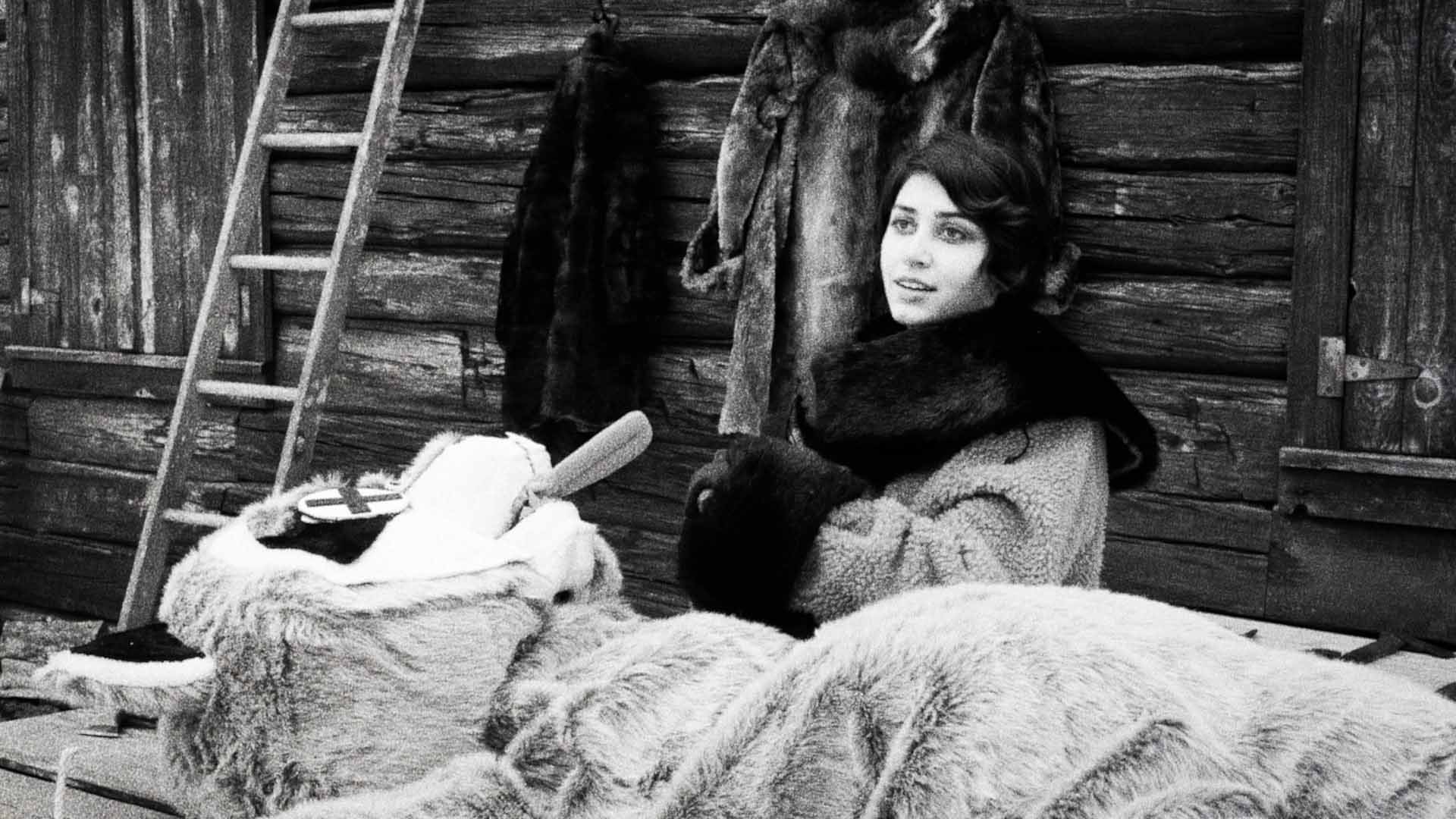
The early scenes concern Jean’s survival in a harsh, hostile cartoon landscape; eventually he learns how to trap and sets out to win the heart of a comely furrier (Olivia Graves, above), whose plug-spittin’ father (Dan Mancheski) runs the local outpost store. Pitched halfway between animation and live action, “Hundreds of Beavers” inhabits a brutally funny Looney Tunes universe all its own, spectacularly realized by Cheslik and his crew and imbued with the kind of comic timing that got lost when the old movie studios folded. The momentum flags occasionally, so you may wonder how on earth they’ll be able to keep it going for 108 minutes, but they do, they do, with a finale that more than lives up to the title and enough breakneck action to throw you back on your theater seat or sofa at the end, happily drained. This is the best kind of silly, made with craft, a bottomless well of inventiveness, and maybe a fair share of edibles. Recommended.
Moving from movies to music, one of the upsides of being the kind of dad who plays the entire history of 20th century popular music to his kids – maybe the only upside – is that those kids grow up and start to play the current state of popular music back to you. It’s a way of keeping up long after you’ve fallen off the back of the youth culture truck. So when child #1 (who is not a child but a 29-year-old woman in her third year of medical school) texted me a link to “Diamond Jubilee” (⭐ ⭐ ⭐, but that may change), the new album by Cindy Lee, I gladly gave it a listen.
That’s easier said than done if you’re one of those people who clicks an app and expects music to just … come out. “Diamond Jubilee” is not available on any of the streaming platforms like Spotify, Apple Music, Tidal, or Bandcamp, nor can it be purchased on old-school vinyl or CD. It’s a 32-track double-album behemoth that’s accessible either as a single two-hour stream on YouTube or as individual WAV files (in .zip format) downloaded from a sketchy-looking website, where you pay a suggested $30, whatever you’d like, or nothing at all.
This approach to distribution – a defiant user-directed flip of the bird to the corporate superstructure of today’s music industry – is very much in line with the muzzy songs and sound of “Diamond Jubilee” and it’s key to why the album is being embraced with a passion that can only be called rapturous by a generational fan-base that can only be called existentially exhausted. (Even the usually arch Pitchfork gave the album a 9.1 wet kiss of a review.)
Take a look at the comments under the YouTube stream: Hundreds and hundreds of grateful thanks along the lines of “Sounds like nothing I've ever heard, and everything I've ever loved” and “Given the state of the world at the moment, this album is a reminder that humanity is capable of creating something beautiful and meaningful, in spite of all of our flaws” and “I feel so absolutely moved by this album, I feel like every relisten of each and every track carves deeper into my being.”
It’s that response to “Diamond Jubilee” that interests an Old like me, almost more than the music itself, which sounds initially like a dreamy, undifferentiated two-hour chunk of basement pop. Cindy Lee is, per Wikipedia, “the drag queen hypnagogic pop project of Canadian musician Patrick Flegel,” who used to be in a band called Women and who since 2012 has released seven albums as Cindy Lee. (This is all news to me, but I’m 66.) The earlier albums have veered between early ‘60s Brill Building pastiche and noise rock, but “Diamond Jubilee” eases up on the cacophony and seems aimed at a grand statement of nostalgia and loss. The Pitchfork review does a pretty good job of describing it: “A foggy transmission from a rock’n’roll netherworld with its own ghostly canon of beloved hits. Like much of Lee’s past work, its spiritual center is girl group music, reduced to a single girl and reflected through a hall of mirrors.”
(Cued to “I Have My Doubts’)
I’d cite individual tracks but I’m only two listens into the thing and it mushes together into one long sigh of lo-fi longing. This music is where the strummy, echo-y genre known as shoegaze went during the pandemic, when people couldn’t gather in crowds to stare at the floor anymore. Despite the participation of instrumentalist Steven Lind, “Diamond Jubilee” is all Flegel’s (or Cindy’s) show – a willful one-person masterpiece, not unlike Todd Rundgren’s “Something/Anything” (1971) or The Eels’ “Blinking Lights and Other Revelations” (2005), both of which sound similarly monolithic on first listen until their strands separate out into filaments of beauty and bile.
What sets “Diamond Jubilee” apart, for me anyway, is how its hermetically sealed lounge-act fatalism mirrors the disenchantment of the young audience that has taken it to heart. The album is a rejection of present-tense American culture for an audience desperate to return to the 1990s of their childhood. Everything about it flies in the face of the music business’s current core values: accessibility, clarity, persona, positivity, hype. The murky production is the antithesis of Top 40 radio’s antiseptic sheen – the songs sound like they were recorded from the next block over. There are no performer photos or videos. You have to buy this music on a Geocities website, for pete’s sake, the ultimate signifier of early Internet homesteading.
(cued to “Flesh and Blood”)
What Flegel is offering their listeners is a conscious, if not self-conscious, lifeline to the analog, the tactile, the comfort of one’s psychic bedroom. The music recalls not just the sounds of the 1960s, but the 1960s as filtered through a Millennial childhood, half-heard on your parents’ stereo while you played on the floor with your Bionicles. It’s a retreat from a world whose betrayals – economic, ecological, political, technological, and social – must seem infinite to anyone in their teens or 20s. So while there’s a David Lynchian vibe to “Diamond Jubilee” – the sense you’ve wandered into a seedy parallel-universe cabaret – it lacks the filmmaker’s undertow of dread. Instead, this only seemingly uncrafted music is benignly soothing, a beckoning dreamland for the teenager inside you who’s still up at three in the morning and feels like the only person in the universe. It’s the sort of album that’s company when company is needed, from a fellow traveler on the midnight bus out of town.
Will I be listening to “Diamond Jubilee” again? The jury’s still out. But it’s impossible for me to begrudge a generation that may want to listen to it forever.
(Cued to “Always Dreaming”)
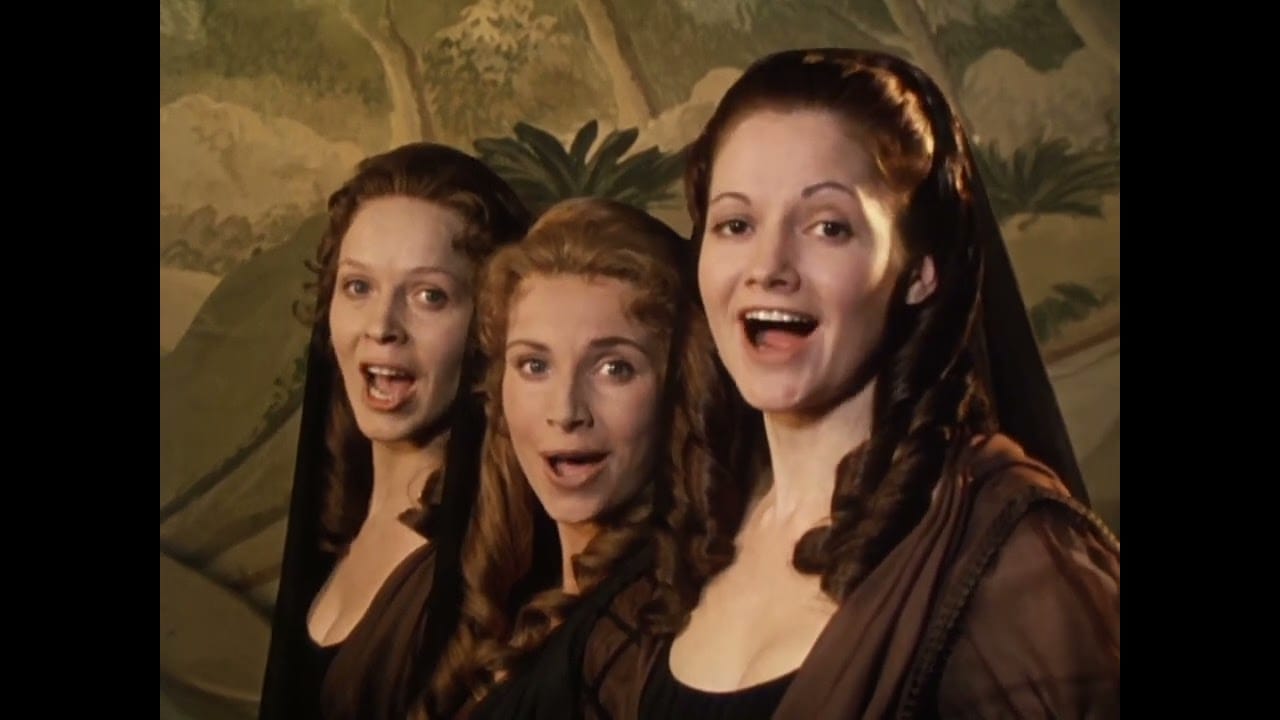
Classic of the week: Ingmar Bergman’s film of “The Magic Flute” (1975, ⭐ ⭐ ⭐ ⭐), on Turner Classic Movies, Saturday April 20 at noon. Peter Cowie’s fine new Bergman biography (my review's up at the WSJ site today) makes clear how many phenomenal stage productions the director staged during his long, busy life – 140, to be precise – and this film is one of the only ways to experience that theatrical magic. Even if you know nothing about opera or Mozart, it’s a transporting experience, maybe worth corralling the kids for if you think they’ll stay seated for its length. I have a funny story about “Magic Flute” – in the late 1970s, my college’s arts center hosted a gala black-tie screening of the film as a fund-raiser, and all the culturati of New Hampshire’s Upper Connecticut Valley was in attendance. I watched it from the projection booth with the projectionist, a handlebar-mustached local guy named Jerry, and neither of us realized until too late that the film distributor had shipped only half of the 135-minute “Magic Flute.” The other film cans contained, in its entirety, a Roger Corman outlaw-biker film – maybe 1967’s “Devil’s Angels,” I don’t remember. What I do remember is Jerry switching the reels from the Queen of the Night’s coloratura aria to the vroom-vroom-vroom of a hundred Harleys in full throttle, and the evening came screeching to a halt. After some debate, the “Magic Flute” screening was postponed to a later date and everyone went home, to the disappointment of more than a few tuxedoed biker-movie fans. Anyway, watch “The Magic Flute” – it’s also on The Criterion Channel and a cheap rental on Apple TV and YouTube, and it’s a very good movie.
A review of "Sasquatch Sunset" can be read by paying subscribers below.
